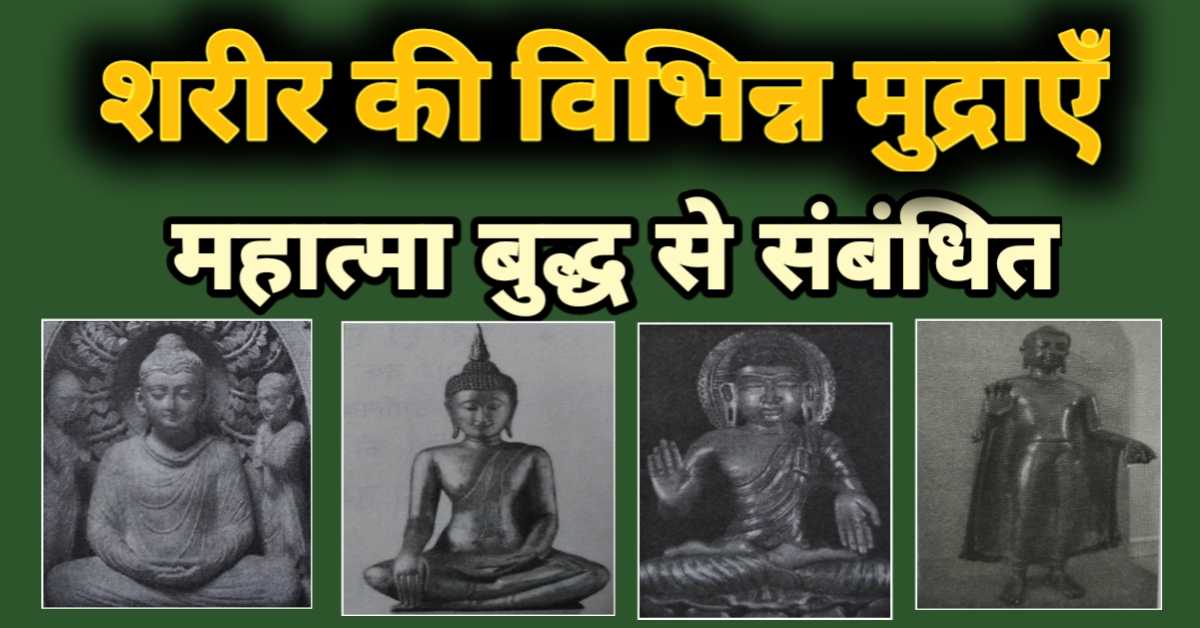
शरीर की विभिन्न मुद्राएँ - महात्मा बुद्ध से संबंधित | Various body postures related to Mahatma Buddha
बुद्ध प्रतिमाओं का सृजन विभिन्न मुद्राओं का आधार बनाकर किया गया है। यहाँ महात्मा बुद्ध की शारीरिक प्रमुख मुद्राएँ इस प्रकार हैं।
भूमिस्पर्श मुद्रा (Bhumisparsha Mudra)
यह बुद्ध की मूर्तियों में प्रचलित सर्वाधिक आम मुद्रा है। इस मुद्रा में बुद्ध को बाँये हाथ के साथ ध्यानमुद्रा में बैठे हुए दर्शाया गया है। गोद में हथेली सीधी रखी हुई है। दायाँ हाथ पृथ्वी को स्पर्श करता है। यह मुद्रा अक्षोब्य के रूप में ज्ञात नीलवर्ण बुद्ध से संबद्ध है। इस मुद्रा के अंतर्गत सत्य का गवाह बनने के लिए पृथ्वी का आह्वान किया गया है। यह इस मुद्रा के महत्व को प्रदर्शित करता है। इसके अतिरिक्त्त, यह मुद्रा बुद्ध के ज्ञान शक्ति के क्षण को प्रदर्शित करती है।
This is the most common posture practiced in Buddha statues. In this posture the Buddha is depicted sitting in a meditation posture with his left hand. The palm is kept straight in the lap. The right hand touches the earth. This mudra is associated with the Nilavarna Buddha known as Akshobya. Under this mudra the earth has been called to become a witness to the truth. This shows the importance of this mudra. Additionally, this mudra represents the Buddha's moment of enlightenment.
इस 👇 बारे में भी जानें।
1. सूर्य नमस्कार और इसकी 12 स्थितियाँ
ध्यान मुद्रा (Dhyana Mudra)
यह मुद्रा ध्यान व योग को इंगित करती है। इसे समाधि या योग मुद्रा भी कहा जाता है। इस मुद्रा में बुद्ध को दोनों हाथों को गोद में रखे हुए दिखाया गया है। फैली हुई अंगुलियों के साथ बुद्ध का दायाँ हाथ, बाएँ हाथ के ऊपर रखा है। कई मूर्तियों में दोनों अँगूठे एक दूसरे को स्पर्श करते हैं। इस प्रकार यह एक रहस्यमयी त्रिकोण का निर्माण करते हैं। यह मुद्रा आध्यात्मिक पूर्णता की प्राप्ति का द्योतक है। इस मुद्रा का प्रयोग बुद्ध ने बोधि वृक्ष के नीचे अंतिम ध्यान के समय किया था।
This mudra indicates meditation and yoga. It is also called samadhi or yoga posture. In this posture, Buddha is shown holding both hands in his lap. Buddha's right hand, with outstretched fingers, is placed on top of the left hand. In many idols both the thumbs touch each other. Thus they form a mysterious triangle. This mudra signifies the attainment of spiritual perfection. This mudra was used by the Buddha during his last meditation under the Bodhi tree.
वितर्क मुद्रा (Discussion Mudra)
यह मुद्रा शिक्षण और चर्चा या बौद्धिक बहस को इंगित करती है। इसमें अंगूठे और तर्जनी के पोर को वृत्त बनाते हुए जोड़ा गया है। दायाँ हाथ कंधे के स्तर से और बायाँ हाथ श्रोणी के स्तर से रखा है। गोद में हथेली ऊपर की ओर है। यह मुद्रा बौद्ध धर्म में उपदेश के शिक्षण चरण को प्रदर्शित करती है। अंगूठे और तर्जनी से निर्मित वृत्त निरंतर ऊर्जा प्रवाह का घोतक है, क्योंकि इसका न कोई आरंभ है और न ही कोई अंत, यह केवल पूर्णता को प्रदर्शित करता है।
This posture indicates teaching and discussion or intellectual debate. In this, the tip of the thumb and forefinger are joined to form a circle. The right hand is placed at the level of the shoulder and the left hand is placed at the level of the pelvis. The palm is facing up in the lap. This mudra represents the teaching stage of preaching in Buddhism. The circle formed by the thumb and forefinger represents a continuous flow of energy, as it has no beginning and no end, it only represents perfection.
"भारतीय कला एवं संस्कृति" के इन 👇 प्रकरणों को भी पढ़ें।
1. भारत की वास्तुकला, मूर्तिकला एवं मृद्भाण्ड
2. हड़प्पा सभ्यता के स्थल एवं उनसे प्राप्त वास्तुकला एवं मूर्तिकला के उदाहरण
3. हड़प्पा सभ्यता की वास्तुकला
4. हड़प्पा सभ्यता की मोहरें
5. हड़प्पा सभ्यता की मूर्ति कला
6. हड़प्पा सभ्यता से प्राप्त मृद्भाण्ड एवं आभूषण
अभय मुद्रा (Abhay Mudra)
यह मुद्रा निर्भयता को प्रदर्शित करती है। यह शक्ति और आंतरिक सुंदरता को प्रदर्शित करती है। इस मुद्रा में दाहिना हाथ मुड़ी हुई भुजा के साथ ऊपर की ओर कंधे की ऊँचाई तक उठा है। दाँये हाथ की हथेली बाहर की ओर है तथा दाँये हाथ की अंगुलियाँ सीधी और जुड़ी हुई हैं। बायाँ हाथ शरीर के बगल में नीचे लटका हुआ है। बुद्ध द्वारा इस मुद्रा का प्रयोग ज्ञान प्राप्ति के तुरंत बाद किया गया था।
This mudra represents fearlessness. It displays strength and inner beauty. In this posture, the right hand is raised up to shoulder height with the arm bent. The palm of the right hand is facing out and the fingers of the right hand are straight and connected. The left hand hangs down next to the body. This mudra was used by the Buddha soon after he attained enlightenment.
धर्मचक्र मुद्रा (Dharmachakra Mudra)
इस मुद्रा का अर्थ 'धर्म या नियम का चक्र घुमाना' अर्थात् 'धर्म को चक्र गति में लाना' है। इस मुद्रा में बाहर की ओर खुली हथेली रखकर दाँये हाथ को छाती से स्पर्श कराया गया है। दाँये हाथ की तर्जनी और अंगूठे के पोर एक-दूसरे को स्पर्श करते हुए रहस्यमयी वृत्त का निर्माण करते हैं। बायाँ हाथ अन्दर की ओर मुड़ा है। इस हाथ की तर्जनी और अंगूठा दाँये हाथ के वृत्त को स्पर्श करते हैं। इस मुद्रा का प्रयोग बुद्ध द्वारा सारनाथ के हिरण उद्यान में ज्ञान के बाद अपने एक साथी को पहला उपदेश देते हुए किया गया था।
The meaning of this mudra is 'Rotating the wheel of Dharma or rule' ie 'Dharma in the circle of motion bring'. In this mudra, the right hand is touched with the chest by keeping the palm open outside. The tip of the index finger and thumb of the right hand touch each other to form a mysterious circle. The left hand is turned inward. The index finger and thumb of this hand touch the circle of the right hand. This mudra was used by the Buddha while giving his first sermon after enlightenment at the Deer Garden at Sarnath.
"भारतीय कला एवं संस्कृति" के इन 👇 प्रकरणों को भी पढ़ें।
1. मौर्य कला एवं स्थापत्य कला
2.मौर्य काल की दरबारी कला
3. मौर्य काल की लोकप्रिय कला
4. मौर्योत्तर कालीन कला की जानकारी
5. मौर्योत्तर काल की स्थापत्य कला- गुफाएँ एवं स्तूप
6. मौर्योत्तर कालीन मूर्तिकला- गांधार, मथुरा और अमरावती शैली
7. मूर्तिकला शैली - गांधार, मथुरा तथा अमरावती शैलियों में अंतर
8. यूनानी कला एवं रोमन मूर्ति-कला
अंजलि मुद्रा (Anjali Mudra)
यह मुद्रा अभिवादन, भक्ति और आराधना का प्रतीक है। इस मुद्रा में दोनों हाथ छाती के पास बंद हैं। दोनों हाथों की हथेलियाँ और उंगलियाँ एक-दूसरे के लंबवत हैं। भारत में इस मुद्रा का प्रयोग लोगों का अभिवादन (नमस्ते) करने के लिए किया जाता है। यह श्रेष्ठ को नमस्कार का प्रतीक है। इसे गहन सम्मान के साथ आदर का प्रतीक माना जाता है। सच्चे बुद्ध (जो प्रबुद्ध हैं) ने इस मुद्रा का प्रयोग कभी नहीं किया था। बुद्ध की मूर्तियों में इस मुद्रा का प्रयोग कभी नहीं करना चाहिए। इस मुद्रा का प्रयोग बोधिसत्व प्राप्ति के लिए किया जाता है तथा इसका प्रयोग वे लोग करते हैं जो पूर्ण ज्ञान की प्राप्ति के लिए तैयारी में है।
This mudra is a symbol of greeting, devotion and adoration. In this mudra, both the hands are closed near the chest. The palms and fingers of both hands are perpendicular to each other. In India this mudra is used to greet people (Namaste). It is a symbol of salutation to the best. It is considered a symbol of respect with deep respect. The true Buddha (who is enlightened) never used this mudra. This mudra should never be used in Buddha statues. This mudra is used to attain Bodhisattva and is used by those who are preparing for the attainment of perfect knowledge.
उत्तरबोधी मुद्रा (Uttarbodhi Mudra)
यह मुद्रा सर्वोच्च ज्ञान का प्रतीक है। इस मुद्रा में तर्जनी को छोड़कर सभी उंगलियों को एक साथ मिलाते हुए तथा तर्जनी को सीधे ऊपर बढ़ाते और एक दूसरे को स्पर्श कराते हुए, सीने पर रखा जाता है। यह मुद्रा व्यक्ति में ऊर्जा प्रवाह को प्रदर्शित करती है। यह पूर्णता का प्रतीक है। इस प्रयोग शाक्यमुति बुद्ध (नागों के मुक्तिदाता) द्वारा किया गया था।
This mudra is a symbol of supreme knowledge. In this mudra, all the fingers except the forefinger are joined together and the index finger is kept on the chest, while raising the index finger straight up and touching each other. This mudra represents the flow of energy in a person. It is a symbol of perfection. This experiment was done by Shakyamuti Buddha (liberator of serpents).
इन 👇एतिहासिक महत्वपूर्ण प्रकरणों को भी पढ़ें।
1. वैदिक सभ्यता- ऋग्वैदिक काल
2. मध्यप्रदेश का प्राचीन इतिहास
3. भारत का इतिहास- बुद्ध के समय के प्रमुख गणराज्य (गणतंत्र)
4. भारत का प्राचीन इतिहास-;जनपद एवं महाजनपद
5. भारत का प्राचीन इतिहास-;जनपद एवं महाजनपद
वरदा मुद्रा (Varda Mudra)
यह मुद्रा दयाभाव, करुणा और इच्छाओं की स्वीकृति को इंगित करती है। इस मुद्रा में दर्शकों की ओर बाहर की ओर खुले हाथ की हथेली के साथ, दाहिना हाथ नीचे की ओर प्राकृतिक स्थिति में रखा जाता है। यदि खड़ा हो तो हाथ को आगे की ओर बढ़ा कर रखा जाता है। पाँच विस्तारित उंगलियों के साथ यह मुद्रा पंच पूर्णताओं को प्रदर्शित करती है- उदारता, नैतिकता, धैर्य, प्रयास और ध्यान संबंधी एकाग्रता।
This mudra indicates kindness, compassion and acceptance of desires. In this pose, the right hand is placed in the natural position facing down, with the palm of the open hand facing out towards the audience. If standing, the hand is kept extended forward. This mudra with five outstretched fingers represents the Pancha perfections- generosity, morality, patience, effort and meditative concentration.
करण मुद्रा (Karan Mudra)
यह मुद्रा बुराई से बचने का प्रतीक है। इस मुद्रा में खुली हथेलियों के साथ हाथ को बाहर की ओर या तो क्षैतिज रुप में या ऊर्ध्वाधर रुप में फैला कर रखा जाता है। अंगूठे द्वारा मध्य की दो उंगलियों को दबाया जाता है एवं तर्जनी और छोटी उंगली को सीधे ऊपर की ओर उठी हुई रखा जाता है। यह मुद्रा नकारात्मकता को बाहर निकालने का संकेत है। इस मुद्रा द्वारा सृजित ऊर्जा रोग एवं नकारात्मक विचार से बचने मे सहायता प्रदान करती है।
This mudra is a symbol of warding off evil. In this mudra, the hands are kept outstretched with open palms, either horizontally or vertically. The middle two fingers are pressed by the thumb and the index and little fingers are kept straight up. This pose is a signal to drive out negativity. The energy generated by this mudra helps to avoid diseases and negative thoughts.
वज्र मुद्रा (Vajra Mudra)
यह मुद्रा ज्ञान को इंगित करती है। यह मुद्रा जापान एवं कोरिया में अधिक ज्ञात है। इस मुद्रा मे बाँये हाथ की खड़ी तर्जनी को दाँये हाथ की मुट्ठी में रखा जाता है। यह मुद्रा ज्ञान या सर्वोच्च ज्ञान का प्रतीक है। इस मुद्रा में तर्जनी ज्ञान का प्रतीक है एवं दाँये हाथ की मुट्ठी उसकी रक्षा करती है। यह मुद्रा दर्पण-व्युत्क्रम के रूप में देखी जाती है।
This mudra indicates knowledge. This currency is more known in Japan and Korea. In this mudra, the vertical index finger of the left hand is kept in the fist of the right hand. This mudra is a symbol of knowledge or supreme knowledge. In this mudra, the index finger symbolizes knowledge and the fist of the right hand protects it. This pose is seen as a mirror-inverse.
इस 👇 बारे में भी जानें।
1. भारतीय संविधान के स्रोत
2. भारतीय संविधान का निर्माण
3. भारतीय संवैधानिक विकास के चरण
4. अंग्रेजों का चार्टर एक्ट क्या था
5. अंग्रेजों का भारत शासन अधिनियम
6. अंग्रेज कालीन – भारतीय परिषद् अधिनियम
आशा है, उपरोक्त जानकारी परीक्षार्थियों / विद्यार्थियों के लिए ज्ञानवर्धक एवं परीक्षापयोगी होगी।
धन्यवाद।
R F Temre
rfcompetition.com
संबंधित जानकारी नीचे देखें।
(Watch related information below) 👇🏻


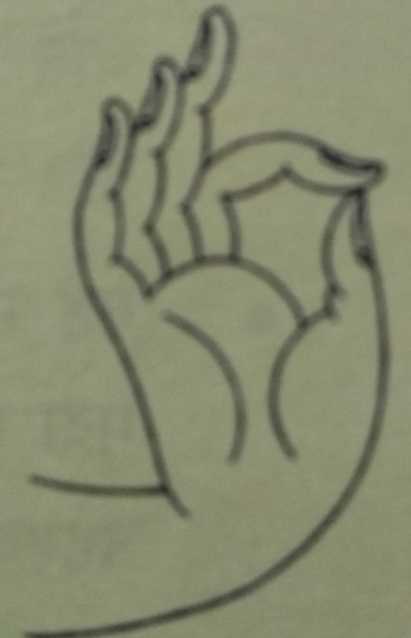
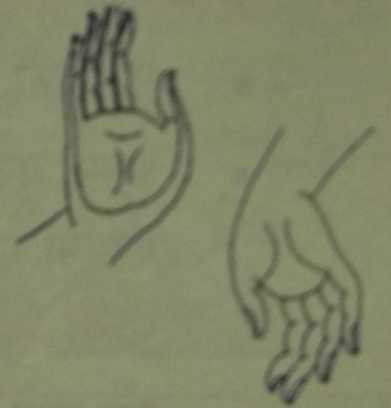
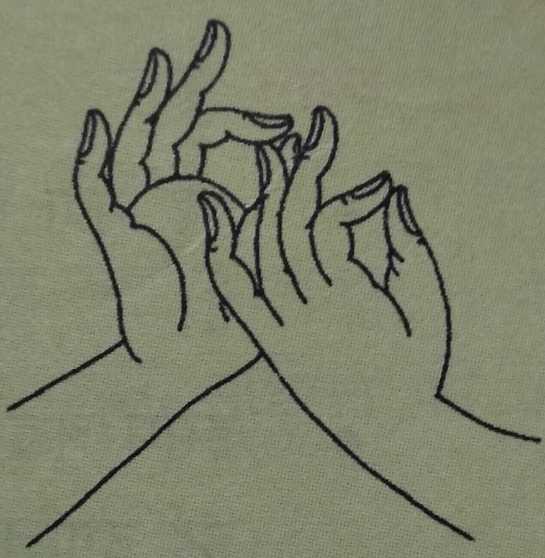
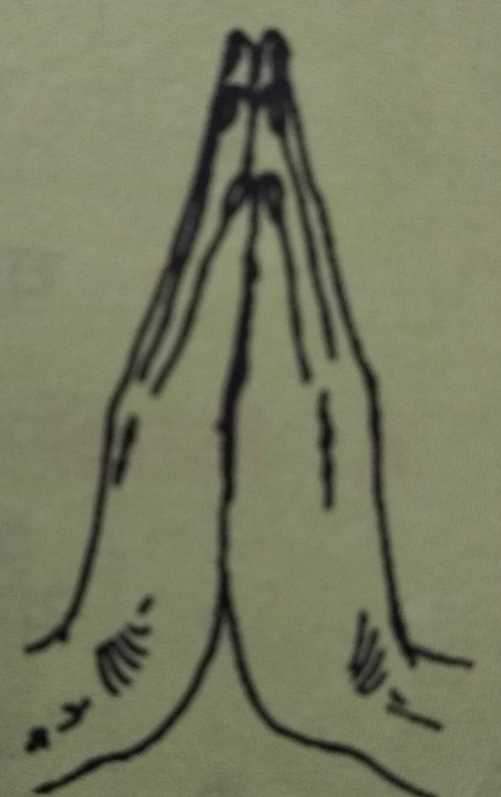


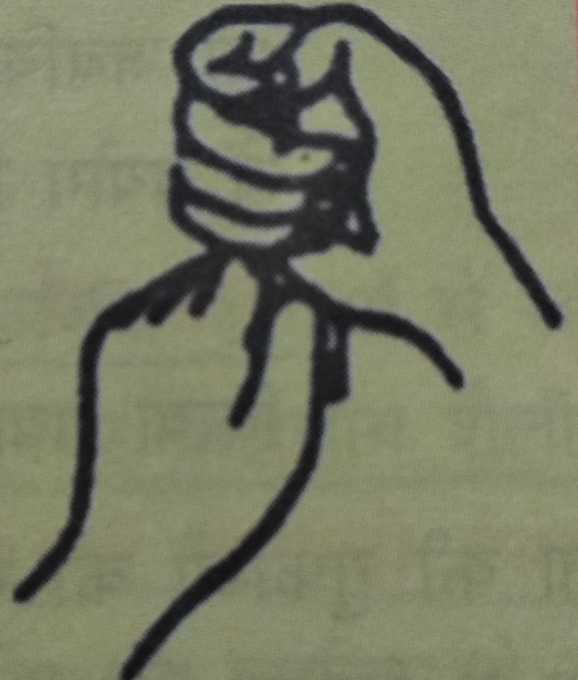
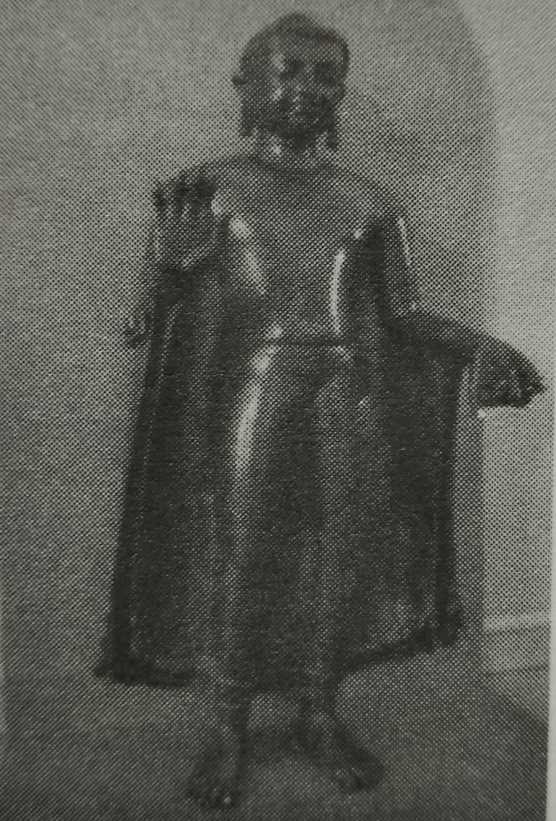

आशा है, उपरोक्त जानकारी उपयोगी एवं महत्वपूर्ण होगी।
(I hope the above information will be useful and important. )
Thank you.
R. F. Tembhre
(Teacher)
pragyaab.com




Comments